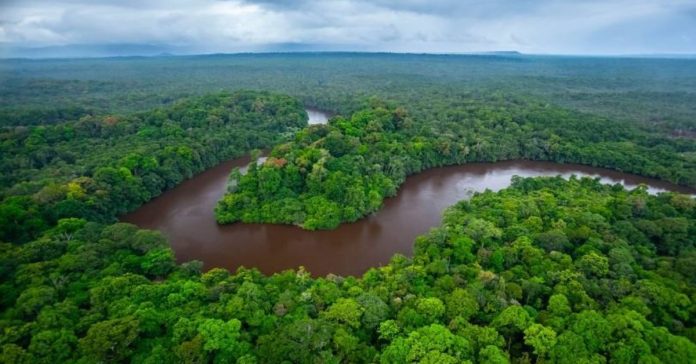More than 50 countries and thousands of delegates gathered in Belém, Brazil, under the humid Amazon skies for COP30; a summit explicitly framed as the “forest COP” and widely expected to finally deliver a concrete roadmap to protect tropical forests and uplift Indigenous peoples’ rights. However, as the summit closed, the verdict was mixed: progress on some fronts, hesitation on others.
At the heart of Belém’s outcome was the launch of the Tropical Forest Forever Facility (TFFF). Brazil COP30 Presidency brought more than USD 5.5 billion in pledges, supported by 53 nations, with a goal to eventually raise USD 125 billion.
Norway pledged $3 billion, Germany €1 billion, and France up to €500 million (around $576 million) by 2030. Brazil and Indonesia each reaffirmed $1 billion commitments, while smaller contributions came from the Netherlands ($5 million) and Portugal ($1 million).
Together, these pledges brought the TFFF’s total funding to over $5.5 billion, with the aim of reaching $10 billion by year-end, creating one of the largest coordinated international funds dedicated to tropical forest conservation.
The fund is structured as a blended-finance vehicle, combining sovereign and private capital, and promises to reward countries that conserve forest cover, using satellite data to verify outcomes.
Crucially, at least 20 percent of its resources are earmarked for Indigenous Peoples and local communities who are often the real custodians of these ecosystems.
That sounds like a breakthrough, but elsewhere in the COP30 outcome, disappointment lingers. Negotiators failed to agree on a mandatory, time-bound deforestation roadmap. Instead, they accepted a voluntary framework, undermining the more ambitious expectations many had coming into the summit.
In his moment of hope, one delegate observed that the world came to the Amazon, yet left without the concrete “how” the forest itself so desperately demands.
For Indigenous leaders, the summit was a double-edged sword. On one hand, Brazil announced the demarcation of 10 new Indigenous territories, spanning close to 1,000 square miles. On the other, figures like Raoni Metuktire, the 93-year-old Kayapo chief, warned that infrastructure plans; highways, oil drilling, river shipping, continue to threaten both land and lives. He urged stronger legal protections, yet said the gains from Belém risk being undercut if they are not translated into real agency and long-term investment.
Read also: Inside G20 Declaration: Landmark commitments on Africa’s energy, debt, and climate agenda
This juxtaposition, of symbolic wins and structural gaps, matters not just for the Amazon, but for forests across Africa. The creation of the TFFF marks a potential shift in how we finance nature.
For years, forest protection has struggled under grant-based models or fragmented aid. The TFFF reframes forests as not just a resource to manage, but a public good that deserves stable, predictable investment. That sends a powerful signal to tropical-forest nations on the continent: that preserving standing forest is not a cost, but a service worth paying for.
The urgency behind TFFF is underscored by alarming data. According to World Resources Institute’s Global Forest Watch, tropical primary forest loss in 2024 surged to 6.7 million hectares, nearly double the previous year, driven mostly by wildfires.
Those fires, often human-caused, burned five times more forest than in 2023 and released an estimated 3.1 gigatones of greenhouse gases, roughly equivalent to India’s annual emissions.
For African rainforests, such trends should ring alarm bells. Much of the Congo Basin remains under threat. Economic pressures, land conversion, mining, conflict, continue to drive deforestation, while once reliable carbon sinks are being pushed to their limits.
WRI Africa’s commentary on the WRI report noted how in the Democratic Republic of Congo, poverty, reliance on forest resources, and instability exacerbate loss. Without new forms of investment that reach local communities, the region risks facing the same fires and degradation devastating the Amazon.
Another insight emerging from these data is the changing nature of forest loss. Historically, agriculture cleared large tracts, but now fire is the dominant driver. That shifts the priorities for policy and finance.
Preventing intentional burns, strengthening fire management, and building resilience in local communities become critical. In Africa, this could mean investing in early-warning systems, community fire brigades, or restoring degraded forest lands, funded in part by mechanisms like TFFF.
Still, a fund, however large, won’t protect forests on its own. For one, governance will matter. The TFFF board is structured to balance sponsor nations and tropical forest countries, but success will depend on transparency, accountability, and independent verification.
Indigenous groups, too, must have a meaningful say in how the funds are used. Without that, the 20 percent earmarked for them risks being symbolic rather than transformative.
Read also: CMAS 2025 publishes post-event report detailing Africa’s carbon market growth and COP30 roadmap
COP30 also exposed deep tensions. Indigenous protests erupted during the summit, with delegates storming restricted zones to demand real action on their land rights. For Africa, where forest-dependent communities often lack formal recognition, the lesson is stark: inclusion must go beyond summit stages into binding policy. Land tenure, legal recognition, and respect for traditional governance systems must underpin any financing mechanism to be truly just and effective.
Looking ahead, COP30 in Belém may be remembered less for the deals signed than for the questions it raised. Can the boldly imagined TFFF deliver real, long-term funding? Will it channel resources equitably to those who defend and live in forests? Can it mobilize private capital without replicating extractive power dynamics?
For African countries with vast forest resources, the answers will determine whether this moment is a turning point or missed opportunity.
In that sense, Brazil COP30 Presidency‘s legacy may lie less in its formal text than in its symbolism: a tropical-forest nation proposing a radical new financial architecture, Indigenous voices demanding space and respect, and the world being forced, once again, to reckon with whether it is ready to pay for standing forests, not just lament them.
Engage with us on LinkedIn: Africa Sustainability Matters






